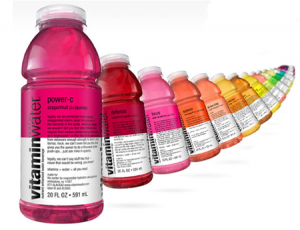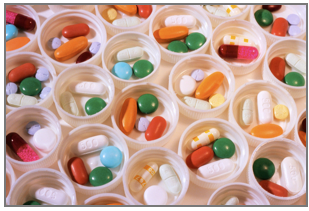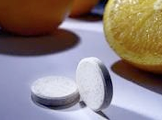The WHOLE Truth About Vitamins
By Mark Bernhard
Posted August 30, 2013; update November 10, 2021. Disclaimer The information presented here is for informative and educational purposes only and is not intended as curative or prescriptive advice.
This article summarizes the dilemma and controversy about vitamin-mineral supplements that now exists in the medical-health area. Freegrab web-master author Walter Sorochan has singled out Mark Bernhard and this article as the best in explaining in simple and comprehensive fashion the mystique of the vitamin-mineral issue better than other similar articles on this subject. Reader should be aware that the information expressed herein is that author Mark Bernhard.
|
Consider these facts: Diabetes is the fastest growing disease in our country. One-third of all Americans either have diabetes or are pre-diabetic. Cancer and heart disease are the leading causes of death despite billions of dollars in research to combat them and tremendous advances in diagnostic and surgical techniques.100 years ago heart attacks were practically unheard of. Today heart disease causes at least 40% of all US deaths—every 30 seconds an American dies of heart disease, every minute from a heart attack. The financial toll of diabetes, cancer, and cardiovascular disease is over $400 billion per year in medical costs.
One person in three has allergies; one in five is mentally ill. 70 million Americans have arthritis and chronically painful joints. 38 million Americans suffer from digestive disorders including ulcerative colitis, diverticulitis, irritable bowel, constipation, diarrhea, acid reflux, candida, and food allergies–almost double the number that suffer from AIDS, cancer and heart disease. Two-thirds of Americans are overweight. 35% of adults and 13% of children are obese—a 75% increase just since 1991. Chips and Coke are a common breakfast; “Super Size” is our middle name. In 1900, 30% of Americans suffered a chronic degenerative disease. Today 70% have one or more. And the age of onset is getting younger. Headaches, sinusitis, indigestion, insomnia, and chronic infections are commonly accepted as “normal” simply because they are widespread. |
All of the above conditions are common but they are not normal.
What most people DON’T know is that they arise almost entirely from our lifestyle and the primary cause is our deteriorating nutritional status. The term “degenerating” implies the body is breaking down, malfunctioning, and falling apart. Common sense would suggest that the FIRST place to look, when something is malfunctioning and falling apart, is the material from which it is made. Even with a family history, whether or not you “get” a degenerative disease depends on your lifestyle and nutrition. Period. But you are at greater risk than your parents because:
1) Never before have we eaten so many refined and processed “fake” foods with so many missing nutrients and
2) Never before have we been exposed to so many chemicals and other environmental toxins.
Let’s examine each of these:
Never before have we eaten so many refined and processed “fake”
foods with so many missing nutrients. Our food looks and tastes
good and has calories and energy so we think its OK–but it’s lacking in
nutrients. 60% of the calories in the typical American diet come from sodas,
white bread, and snack foods. Americans now consume an astonishing 9.3
million tons of refined sugar each year–that’s 63 pounds for every man,
woman and child! Sugar now accounts for 16 percent of the calories consumed
by the average American, and 20 percent of teenagers’ calories. According to
U.S. Health Department statistics, added sugars provided only 11 percent of
the average American’s calories 20 years ago. This change is largely due to
increased soda and fruit drink consumption. The average American consumes
over 61 gallons of sweetened beverages annually. Of the 300 additional
calories Americans on average have consumed daily over the last 30 years,
more than 40 percent come from soda, “fruit” drinks, mixes like Kool-Aid and
Crystal Light, and beverages like Red Bull, Gatorade and dubious offerings
like Vitamin Water, which contains half as much sugar as Coke.

Many authorities associate this with the increasing frequency of asthma, arthritis, cancer, cataracts, constipation, epilepsy, fatigue, heart disease, ADD, ADHD, depression, headaches, sinusitis, tooth decay, hypoglycemia, mental illness, poor memory, migraines, varicose veins, diabetes, PMS…and the list goes on. For the first time in history “lifestyle” diseases kill more people than communicable ones.
This increase in “fake food” consumption is compounded by the deteriorating nutritional value of “real” food raised on our depleted soil. Today’s spinach, for example, has only 17% of the iron it did in 1948. Extensive processing then reduces their life force and nutritional value even more. Human Mutation magazine has noted that the resulting micronutrient deficiency is more damaging to DNA than either radiation or chemotherapy. Such suboptimal nutrient levels impair the normal expression of our genetic programming.
Never before have we been exposed to so many chemicals and other environmental toxins. The Environmental Protection Agency (EPA) estimates that 60,000 different chemicals have been dumped or buried in the U.S. in the last 100 years. 20,000 pesticides are currently registered for use in the US. In 1995 the US used 270 billion pounds of artificial fertilizers and 2 billion pounds of pesticides. There are over 3000 carcinogenic chemicals in our food and the average American eats 6 pounds of chemicals per year. The EPA states that 60% of herbicides, 90% of fungicides, and 30% of insecticides are carcinogenic. This all leads to a tremendous burden on our filtration system–the liver and kidneys and the immune system.
Add to all this air and water pollution and ozone depletion and the stress of our demanding and over-scheduled lives. Even exercise, a “good” stressor, increases nutritional requirements! Finally, consider the overuse of antibiotics that has resulted in the mutation of ever more virulent germs.
What can be done about this?
Drugs are now commonly being used to treat these chronic diseases. But drug side effects and prescribing errors have become a leading cause of death—right behind heart disease, cancer, stroke, and the fourth leading cause—hospitalization!
But if these chronic diseases are actually normal reactions to malnutrition–the result of the increased use of adulterated, counterfeit foods like sugar, refined carbohydrates, and hydrogenated and other synthetic fats—then drugs are not the answer, real food is.
Most consumers know that the goal of health will never be achieved through drugs that mislead us into thinking we’re fine. They are frustrated with traditional drug therapy for their ailments and are searching for healthier alternatives.
 It
is now well known that our nutritional status determines the readiness of
our immune and hormone system to deal with stress, environmental toxins, and
pathogenic microorganisms. The incidence of virtually every chronic disease
has consistently been shown to decrease with the consumption of whole foods,
preferably organic. Those who eat a diet that contains the most fresh
vegetables, fruits, legumes, nuts, seeds, whole grains, and cold-water fish,
are always in the group found to have the lowest risk,
regardless of the disease.
Most of us have heard that we should eat five servings of fruits and
vegetables daily but the truth is most of us don’t. According to the
National Center for Chronic Disease Prevention, only about a quarter of us
consume that many vegetables and fruits daily and that hasn’t changed in the last ten years.
It
is now well known that our nutritional status determines the readiness of
our immune and hormone system to deal with stress, environmental toxins, and
pathogenic microorganisms. The incidence of virtually every chronic disease
has consistently been shown to decrease with the consumption of whole foods,
preferably organic. Those who eat a diet that contains the most fresh
vegetables, fruits, legumes, nuts, seeds, whole grains, and cold-water fish,
are always in the group found to have the lowest risk,
regardless of the disease.
Most of us have heard that we should eat five servings of fruits and
vegetables daily but the truth is most of us don’t. According to the
National Center for Chronic Disease Prevention, only about a quarter of us
consume that many vegetables and fruits daily and that hasn’t changed in the last ten years.
What do most people do–where do they turn? Nutritional supplements are at the top of the list. If the vegetables and fruit themselves don’t have as much nutrition as before and people aren’t eating enough to begin with to keep up with the increased stress and environmental pollution, then supplementation is essential for optimal health. That is why $17,000,000,000 is spent by 70% of Americans every year on “vitamins”. It seems like a good idea….and it is.
Yet our health still continues to deteriorate! Why?
Because almost all the vitamins people buy are synthetic. A chemical made in a laboratory can never replace the benefits of nutritionally dense foods. A vitamin is not a thing or a drug—it is a function that requires synergistic co-factors in order to work. We should be getting all our nutrition from food sources—and that includes our vitamin/mineral supplements!

We are overwhelmed with vitamin choices: buffered, esterified, colloidal,
chelated, in liquid, capsules, tablets, even sprays. These, however, are
just different ways of delivering the vitamins. Regardless of how they are
presented to the body, the truth is there are only three types of commercially available vitamins:
1) Synthetic formulas not derived from food. Six large pharmaceutical manufacturers supply all the ingredients to the various companies that combine them into their own formulas and then put their own label on them. The original source? Petroleum, coal tar and GMO corn syrup. Commonly, what is called vitamin B is derived from petroleum or coal tar and vitamin C (ascorbic acid) is made from GMO corn syrup with the help of sulfuric acid. These synthetics contain a molecular formula that the FDA has said is the same as “the real thing,” but they aren’t (more on this later). Plus they contain none of the co-factors required by your body to use it. Are these synthetics cheaper–you bet!
2) Crystalline vitamins are made by treating natural foods with chemicals, solvents, and heat that destroys almost all of the co-factors and enzymes, rendering them of limited usefulness. Like the synthetics, these may have additives, allergens, sugar, artificial flavors and colors, and other potentially hazardous chemicals that imbalance body chemistry. The label of both the synthetic and crystalline vitamins is required to list the chemical name of the nutrient only, not the source from which it is derived. If no real food is mentioned in the ingredients this is the tip-off to a non-food source. The words “natural,” “organic,” and “pure” have no meaning whatsoever in the world of marketing vitamins. To be labeled “natural” the product has to be only 10% natural (therefore 90% synthetic) and corn sugar and tar are considered “natural.”
3) Whole food vitamins with only the water and fiber removed. These are processed below 112˚ so the enzymes are still alive (temperatures above 118˚ destroys them). They are protein in nature and contain all the nutrients required by the body in a form that the body can utilize. They are alive.
Only 30% of nutrition companies manufacture their own products. Most of the supplements found in drug stores, “health” food stores, and doctor’s offices are made from ingredients synthesized in a laboratory and supplied by drug manufacturers like Merck and Hoffman-LaRoche. Roche Pharmaceuticals makes over 80% of the ascorbic acid in the retail markets. Even the “food-based” vitamins currently on the shelves are little more than yeast infused with synthetic vitamins.
Many people have cabinets full of herbal, vitamin and mineral supplements but still don’t feel as well as they think they should. Are you one of them? The reason is: the synthetic and crystalline vitamins don’t work or stop working. Why is that? Does this happen with food? Does the nutrition in an orange or carrot or apple “stop working” if you eat them for too long. Of course not.
To answer the question of why a vitamin works or not we need to look at how easily the body utilizes it—this is termed “bioavailability.”
 The
manufacturers of synthetic vitamins spend a lot of money to convince us that
a “megadose” is the same as high potency, but “bioavailability” should be
the true measure of potency. Unlike what we have been told, “a
little” can be better than “a lot.” We need whole nutritional
complexes not just pieces. A minute amount of a vitamin in its whole form,
as found in food, is more effective nutrition than a large amount of a
vitamin fraction. 75 mg. of vitamin C from whole food is active in the blood
for 9 hours. 1000 mg of ascorbic acid + rose hips is active for 90 minutes.
The reason is that, although we are told ascorbic acid is the same as
vitamin C, it is only one part of the vitamin C complex: the protective
coat. Taking ascorbic acid is like eating a banana peel and thinking you got
some nutrition. Enzymes, precursors, co-enzymes, antioxidants, trace
elements, synergistic activators and micronutrients, both known and unknown,
which allow the body to actually use a vitamin, normally accompany it in
food. When separated from their natural synergists, these vitamins lose up to 99% of their potency.
The
manufacturers of synthetic vitamins spend a lot of money to convince us that
a “megadose” is the same as high potency, but “bioavailability” should be
the true measure of potency. Unlike what we have been told, “a
little” can be better than “a lot.” We need whole nutritional
complexes not just pieces. A minute amount of a vitamin in its whole form,
as found in food, is more effective nutrition than a large amount of a
vitamin fraction. 75 mg. of vitamin C from whole food is active in the blood
for 9 hours. 1000 mg of ascorbic acid + rose hips is active for 90 minutes.
The reason is that, although we are told ascorbic acid is the same as
vitamin C, it is only one part of the vitamin C complex: the protective
coat. Taking ascorbic acid is like eating a banana peel and thinking you got
some nutrition. Enzymes, precursors, co-enzymes, antioxidants, trace
elements, synergistic activators and micronutrients, both known and unknown,
which allow the body to actually use a vitamin, normally accompany it in
food. When separated from their natural synergists, these vitamins lose up to 99% of their potency.
All synthetic vitamins are like this—they are merely a small portion of the food vitamin—they are not the whole vitamin complex that has been studied and determined to be essential! In a Harvard University study of age-related macular degeneration, refined vitamins A, C, E, beta-carotene did not decrease the risk of AMD, but a diet rich in the “carotenoid complex” (especially leafy greens) had a 43% lower risk. All the nutritional research showing no health benefits from vitamins and minerals (see below) has been done with the synthetic or crystalline forms. Yet the synthetic vitamin companies never reference these findings—they always cite the original research that shows the benefits that come from the whole food sources they don’t use!
Even as far back as 1934, studies showed differences between synthetic and food-based vitamins. Dr. Casimir Funk, who actually coined the term “vitamine” said, “The synthetic product is less effective and more toxic.” Toxic? Yes. Synthetic vitamins exert a drug-like effect, not a nutritive one. It may surprise you to learn that synthetic vitamins are not only inferior; they are dangerous and can actually create nutritional deficiencies because the missing synergists are required to transform the vitamins into energy for the body. So the body has to rob its own stores, making synthetic vitamins actually “anti-nutrients!” It is often said that what the body doesn’t need will “just pass through.” This isn’t true. Eliminating things from the body also takes energy and uses up stores of other nutrients. Over 200 studies comparing synthetic and food sources have confirmed this. Here are a few:
1939: Journal of Natural Agriculture reports that synthetic vitamin B administered to pigs resulted in increased female sterility and lactation problems in each successive generation.
1941: Dr. Agnes Fay Morgan, food research scientist at the University of California found that animals on a diet enriched with synthetic vitamins died long before animals on an unenriched diet—such phony enrichment “precipitate conditions worse than the original deficiency.” The American Academy of Applied Nutrition reported the same findings in 1949.
1994: The New England Journal of Medicine reports that synthetic E and A led to a higher incidence of lung cancer, heart attacks, strokes and death in smokers than no supplementation at all!
1995: The New England Journal of Medicine reports that high doses of synthetic vitamin A (10K units/day) increased birth defects 400%. There was no effect with vitamin A from food at any amount. (There is no known toxicity level of vitamin A if it is combined with adequate, food-based vitamin C).
1998: A British study found that 500 mg of synthetic C promoted free radical damage of DNA; the opposite of the findings with whole food vitamin C, a natural anti-oxidant.
2000: Reuters Health reports a study on men who took 500 mg of synthetic vitamin C daily. Over an 18-month period, they had a 250% increase in the thickness of the inner lining of the carotid artery, a measurement for the progression of atherosclerosis. That is, synthetic vitamin C induced atherosclerosis, even at .5 grams/day. Whole food vitamin C protects and repairs the inner lining of blood vessels and is a preventative against atherosclerosis.
2002: A Harvard study of over 72,000 nurses showed that those who consumed high levels of vitamin A in either pills or “fortified” foods had a 48% higher risk for hip fracture than nurses who had the lowest intake.
2003: A study of men taking 500 mg of synthetic Vitamin C daily found that, over an 18 month period, they had a 250% increase in the inner lining of the carotid artery. This thickening is a measurement of the progression of atherosclerosis. In other words, synthetic Vitamin C induced atherosclerosis even at a dose of 500 mg per day.
2004: Copenhagen researchers reviewed 7 randomized trials of beta-carotene, selenium, and synthetic vitamins C and E (alone or in combination) in esophageal, gastric, colorectal pancreatic, and liver cancer. The antioxidant users had a 6% higher death rate than placebo, users.
2005: Johns Hopkins researchers reviewed the data from 19 vitamin E clinical trials involving over 135,000 people and found that daily doses of synthetic vitamin E in excess of 400 IUs increased death risk by 4%; by 6% if other vitamins and minerals were also taken. Another 2005 study of 9,500 patients taking 400IUs of the same E daily showed no decrease in cancer, heart disease or stroke, but a 13% higher risk for heart failure!
2006: The Journal of the American Medical Association and the Wall Street Journal both reported that synthetic D, E, B, and C were not only ineffective but also dangerous. C and E when taken in frequent mega doses depress sperm motility leading to decreased fertility. Excess D leads to calcium imbalance just like a deficiency. Thiamine (B1) in small doses can alleviate herpes zoster; large doses can exacerbate it. A deficiency of B1 can simulate hyperthyroidism; so can an excess. Most high-potency B is predominately thiamine. The body can only absorb 2-5 mg./day yet most formulas have 50-100mg.
2007: The Journal of the American Medical Association did a meta-analysis of all randomized trials conducted up to October 2005 involving adults comparing beta carotene, vitamin A, vitamin C (ascorbic acid), vitamin E, and selenium vs. placebo vs. no intervention. Their conclusion? Treatment with beta carotene and vitamins A and E may increase mortality.
2011: Compared to men who did not take vitamin E, those who took 400 international units (IU) of the vitamin every day in the study funded by the National Cancer Institute were 17% more likely to develop prostate cancer over an average of seven years of follow-up.
Some zinc supplements can impair absorption or utilization of A, C, iron, copper and some hormones. A copper deficiency can increase cholesterol and prompt your physician to recommend statin drugs (something I adamantly do not recommend, but that’s another important story).
An additional concern is that consumers regularly ingest vitamins at levels that are pharmaceutical in quantity (mega dose) rather than what would be found naturally in eaten foods. (This can even become a problem with excessive intake of whole, natural juices as well). A synthetic vitamin merely stimulates the body without becoming part of the cellular process. A mega-dose of a synthetic or isolated vitamin has a pharmacological (drug-like) effect and stimulates or sedates the body, while a balanced food concentrate has a nutritional effect and supports and enhances normal physiological processes. The body’s rapid elimination of synthetic vitamins via the urine illustrates the temporary pharmacological action. The body treats natural vitamin complexes from food not as waste products, however, but as nutrients.
But these synthetic vitamins continue to sell because they are very profitable (the manufacturers are happy), they are cheaper and the public has been convinced that “the more milligrams the better” (the public is happy) and they have an almost indefinite shelf life (the retailer is happy).
If all the above is true, why do synthetic vitamins make people “feel” better—which they do for a while? It’s because they stimulate the thyroid and adrenal glands like any “foreign” (non-food or allergenic) substance does without becoming part of the cellular process. They can increase cell metabolism, raise blood sugar, and cause the body to release anti-inflammatory and pain-suppressing substances. But that effect rapidly wears off and then the consumer is off to “the next big thing” that will give them that “energy boost.” Sound familiar? In an effort to sound more scientific, many vitamin products are now referred to as “nutraceuticals.” The name itself should clue us in to their drug-like nature. True energy only comes from true fuel. Water and sugar will revive a starving person temporarily but it isn’t nutrition. Whole-food supplements don’t create a burst of energy that quickly passes—like the drug effect of coffee, sugar, and cigarettes–but a consistent boost throughout the day–like food. Whole food helps the body repair. Drugs and stimulants are never healing agents. You can’t repair and rebuild a living body with dead chemicals. It is important to remember that vitamin deficiencies are almost always multiple and therefore inadequately treated by administration of a single pure substance. None of us has a synthetic vitamin deficiency, we have a food deficiency–the body needs real food. The chemist cannot create life or even an apple; neither can he create a complex vitamin—the essential life element in foods.
 To
date science has identified at least 3800 nutrient components in food. If a
major aspect of returning to health is repayment of depleted nutrients, then
it makes sense to give the body the full complement of what it’s lacking—the
whole nutrient picture as nature intended. In 2002, the Journal of the
American Medical Association stated: “Foods contain thousands of compounds
that may be biologically active. Vitamin supplementation is not an adequate
substitute for a good diet.” This is true. The goal of any supplement
program should be to correct deficiencies and then maintain adequate
nutritional status through a healthy diet. But as we have seen, most
vitamins that people take do not correct anything, but actually make matters worse!
To
date science has identified at least 3800 nutrient components in food. If a
major aspect of returning to health is repayment of depleted nutrients, then
it makes sense to give the body the full complement of what it’s lacking—the
whole nutrient picture as nature intended. In 2002, the Journal of the
American Medical Association stated: “Foods contain thousands of compounds
that may be biologically active. Vitamin supplementation is not an adequate
substitute for a good diet.” This is true. The goal of any supplement
program should be to correct deficiencies and then maintain adequate
nutritional status through a healthy diet. But as we have seen, most
vitamins that people take do not correct anything, but actually make matters worse!
Every cell in our body carries out 100,000 biochemical reactions per second. How can you correct the nutritional deficiencies developed over the last 10-60 years of poor diet? A radio won’t run on a battery that has almost no energy. Who’s recharging yours? To make up for a prior or current unhealthy lifestyle, even perfection now is not enough to pay back long-standing nutritional deficiencies.
It takes 3-6 months to bridge the gap between what you actually ate and what you should eat. We have also seen that our current food supply is woefully inadequate in nutrition. Our bodies use nutrition first for survival, only secondarily for healing. Only when there is an excess of real nutrients at day’s end can we repair previous damage. That’s why natural healing takes time. We have to continue to feed our bodies with (at least) small amounts of whole foods over a period of several months to even begin to return to health.
Thank you for reading this far. I know there has been a lot of information that you may not have heard before. But it is important for your health. It should be obvious that I am opposed to taking synthetic vitamins. Despite their price they are not cheap; they cost you dearly! Good health is a value, not a bargain. I recommend nutritional supplements made only from natural, whole foods concentrated to a therapeutic dose and processed at less than 118. The only company I know of that provides such products, and has been doing so since 1929, is Standard Process.
In 2001, the United States Department of Agriculture, when asked if people should double their intake of nutrients to make up for the decreasing vitality of food, stated, “The nutritional content of food is not as important as things like appearance and big yield.” They’re talking about the food you put into your and your family’s bodies! Do you know any industry that states: “The quality of the materials that go into building and maintaining the operation of our products is irrelevant”?
 Could the airline industry get away with building jets with scrap materials and
servicing them whenever they get around to it with similar materials? When
warning flashers light up in the cockpit, could they get away with applying
duct tape over them to “fix” the problem? Would it be acceptable for the
airlines, when there is the inevitable malfunction or crash, to run
expensive investigatory tests and discover all kinds of things that aren’t
working properly but never, ever evaluate or question the quality of the
materials used to build the planes? Of course not. Yet that is what the
orthodox medical approach to nutrition, the powerful pharmaceutical and
commercial food industries, and the multi-billion dollar vitamin supplement
manufacturers would have you believe about your body.
Could the airline industry get away with building jets with scrap materials and
servicing them whenever they get around to it with similar materials? When
warning flashers light up in the cockpit, could they get away with applying
duct tape over them to “fix” the problem? Would it be acceptable for the
airlines, when there is the inevitable malfunction or crash, to run
expensive investigatory tests and discover all kinds of things that aren’t
working properly but never, ever evaluate or question the quality of the
materials used to build the planes? Of course not. Yet that is what the
orthodox medical approach to nutrition, the powerful pharmaceutical and
commercial food industries, and the multi-billion dollar vitamin supplement
manufacturers would have you believe about your body.
Instead, why not look at whole food nutrition and diet as a normal rather than an “alternative” choice. Proper diet and whole food nutrition create the right conditions for maximum healing. We all know that good health now and throughout life is our most precious possession. Can we truly heal a body with a chemical?
Finally, let’s consider the “energetic” aspect of what we put into our body.
Chemicals are dead, inert. We are alive and need to eat living things to remain healthy. Yet this entire line of thinking is almost completely ignored, actively resisted and even ridiculed by our conventional healthcare system. If the materials from which something is made, including living systems, is poor quality (refined “junk” foods), the wrong type (synthetic imitation vitamins, inorganic minerals), or toxic (bleach, food additives, preservatives, trans-fats, etc.), there should be no surprise that malfunction and breakdown (degeneration) results. Our modern “holistic” approach has been subverted by the promotion of isolated chemical “nutrients” (AKA “nutraceuticals”) to benefit the bottom line of an exploding “vitamin-industrial complex.”
Remember: you should not have to take a lot of supplements the rest of your life if you eat a healthy (preferably organic) diet with a full compliment of essential nutritional factors and balanced healthy fats, and limit your exposure to fake foods and environmental poisons. The goal of any supplement program should be to correct deficiencies and then maintain adequate nutritional status as much as possible through a healthy diet. Improved health and increased vitality is my goal for you. I hope it becomes yours.
“One of the biggest tragedies of human civilization is the precedence of chemical therapy over nutrition. It’s the substitution of artificial therapy over natural, of poisons over food, in which we are feeding people poison in trying to correct the reactions of starvation.” Dr. Royal Lee, Founder of Standard Process, January 12, 1951.
References:
Bernhard Mark, "The WHOLE Truth About Vitamins," Dr. Bernhard Santa Cruz Chiropractor, 2012. Article by Bernhard: Vitamin truth is no longer active.
 Hormonal problems, from fatigue and low thyroid to prostate disease,
menstrual and/or menopause dysfunction and osteoporosis, are epidemic. 20%
of American couples are infertile.
Hormonal problems, from fatigue and low thyroid to prostate disease,
menstrual and/or menopause dysfunction and osteoporosis, are epidemic. 20%
of American couples are infertile.